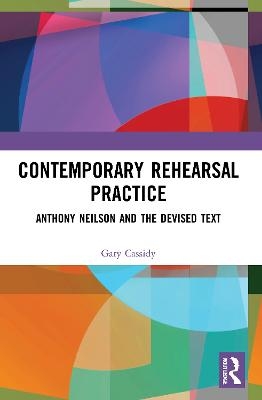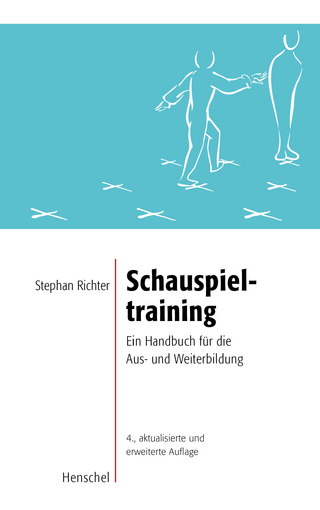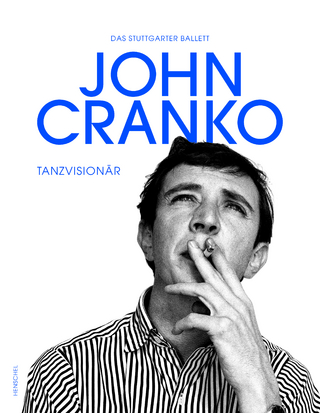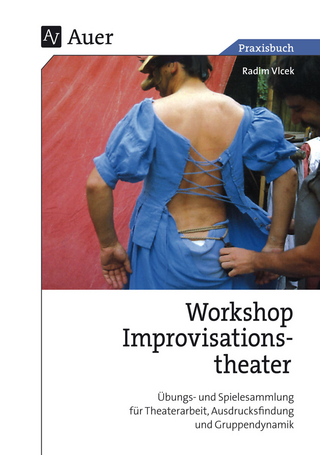
Contemporary Rehearsal Practice
Routledge (Verlag)
978-0-367-61557-4 (ISBN)
This study analyses material edited from 100 hours of footage of the rehearsals of Neilson’s 2013 play Narrative at the Royal Court Theatre, as well as interviews with Neilson himself, the Narrative cast and actors from other Neilson productions. Replete with case studies, Gary Cassidy also considers the work of other relevant practitioners where appropriate, such as Katie Mitchell, Forced Entertainment, Joan Littlewood, Peter Brook, Complicite’s Simon McBurney, Stanislavski and Sarah Kane.
Contemporary Rehearsal Practice will be of great interest to scholars, students and practitioners of theatre and performance and those who have an interest in rehearsal studies.
Gary Cassidy is a Senior Lecturer in Acting at Bath Spa University. He trained as an actor at the Royal Conservatoire of Scotland and has many years of professional acting experience (Equity name Cas Harkins). His publication areas include contemporary British theatre and the analysis of screen acting.
Content
Acknowledgement
Introduction
Anthony Neilson: An Overview
Introducing the Narrative Rehearsals
Methodology
Book Structure
Part 1: Neilson’s Authorial Process
Part Introduction
Chapter 1: Neilson’s Authorial Process and the Actors’ Input
Case Study 1: Neilson as Author, Blackmail and Murder, and the Authorial Trope of Sound to Portray Psychological Liminality
Case Study 2: The Actor’s Indirect Input into Neilson’s Convoluted Jigsaw
Case Study 3: Olly Rix, Shakespeare and Superheroes: The Actor’s Direct Input
Conclusion
Chapter 2: ‘The Footmouse Dance’: The Actors’ Input into Authorial Tropes and Neilson’s Ad-Hoc Approach to Authorship
What’s in a Name?: The Naming of Characters as an Authorial Trope in Neilson’s Work
Zawe Ashton and the Cancelled Magazine Subscription: The Actor’s Direct Input Reconsidered
"Footmouse! Brilliant!": Humiliation as an Authorial Trope in Neilson’s Work
Chance and the Arbitrary: Neilson’s ‘Magpie’ Approach to Authorship
Conclusion
Part 2: Neilson’s Process and Improvisation
Part Introduction
Chapter 3: Improvisation and Characterisation
‘Box Therapy’: Uncertain Beginnings with Random Objects
Improvisation and Characterisation via Stanislavskian Principles
Instinct
Mask Work
The Relationship Between Actor and Director: Unproductive Aspects
The Relationship Between Actor and Director: Productive Aspects
Conclusion
Chapter 4: The ‘Human Soundscape’: Improvisation, Rules and Failure
Uncertain Beginnings with an Absence of Rules
Humour, Rules and Challenging Leadership
Corpsing
Failure as Failure
Play and Catharsis: Therapy for the ‘Box Therapy’
Conclusion
Part 3: Directing Actors
Part Introduction
Chapter 5: Neilson the ‘Unsafe’ Director
Directing and Power: Neilson’s Egalitarian Approach
Directing and Power: Neilson’s Not Quite So Egalitarian Approach
Power and Communication
‘Ask the Audience’: The Suggestion of Audience Participation and its Rejection
‘Ask the Audience’: Not Neilson’s Way or the High Way
‘What Did You Expect’: Neilson Directs the Ending
Conclusion
Chapter 6: Neilson and the Actor’s Process
The Stanislavskian Actor’s Process
Actors’ Heterogeneity
Case Study 1: Neilson’s Motivational Speech
The Actor’s Process, Emotional Labour and the Reality of Working Conditions
Case Study 2: Press Night
The Importance of Timing for the Actor’s Process
Actors’ Coping Strategies
Conclusion
Book Conclusion
Index
| Erscheinungsdatum | 17.08.2022 |
|---|---|
| Verlagsort | London |
| Sprache | englisch |
| Maße | 156 x 234 mm |
| Gewicht | 294 g |
| Themenwelt | Kunst / Musik / Theater ► Theater / Ballett |
| ISBN-10 | 0-367-61557-6 / 0367615576 |
| ISBN-13 | 978-0-367-61557-4 / 9780367615574 |
| Zustand | Neuware |
| Informationen gemäß Produktsicherheitsverordnung (GPSR) | |
| Haben Sie eine Frage zum Produkt? |
aus dem Bereich


